category: Limet-Filling pattern
linen used: 13.5/cm thread count
threads used: coton à broder No. 20
stitches used: Satin and Honeycomb Darning stitches
center: longitudinal axis = withdrawn thread line
one pattern segment = 18 threads
An unusual stripe pattern requires an uneven thread withdrawing.
The filling pattern shown here is a practice exercise only. You can see it used in a shape at the end of this article.
Withdraw the thread along the central longitudinal axis. Starting from there, leave 4 threads on each side, withdraw one and from there alternately 2 x every fourth thread and 2 x every fifth thread.
Vertically withdraw every fourth thread.
Beginning on the left of the middle, embroider Satin stitches over 2, 3, 4, 5, 4, 3 threads (see picture) and repeat this stitch sequence continuously. It’s a good idea to say the sequence of numbers as you embroider so you don’t get confused.
When you reach the end of the row, turn the work and embroider the same sequence of stitches one square up. One fabric thread remains between the stitches of the first and second row.
Leave 2 x 3 fabric thread groups free and work over the 2 x 4 fabric thread groups Satin stitches in the established way .
You can – as seen in the picture – start all left sides of the double rows with the same stitch sequence, but you could also start one square up – then the left and right sides of opposite double rows run in mirror image. This results in a slightly different appearance of the pattern.
When all double rows over the groups of four threads have been completed, work Honeycomb Darning stitches in the remaining areas – see picture.
In this way, a striking stripe pattern is achieved, which only unfolds its full effect after shrinking in the laundry.
If you want to make the double rows a bit wider and thus even more striking, you have to leave 5 fabric sthreads and work a stitch sequence of 3, 4, 5, 6, 5, and 4 – see picture.
You can change the number of rows of Honeycomb Darning stitches to achieve different patterns.
Also the size of the area in which the pattern is embroidered,
and the fineness of the fabric matters.
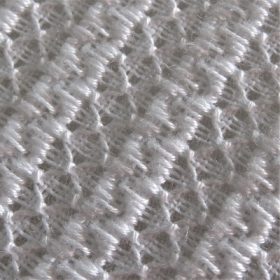
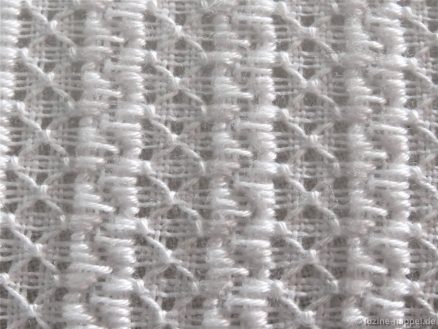
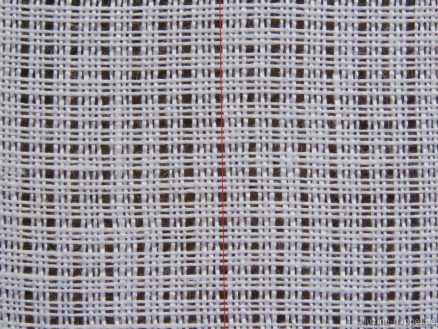
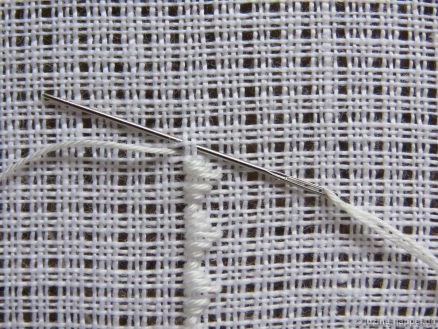
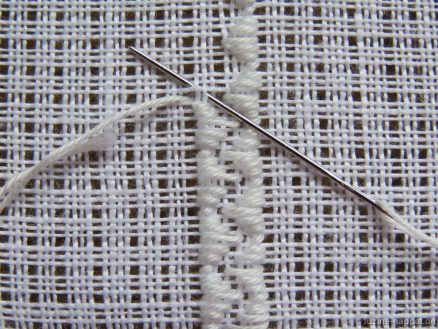
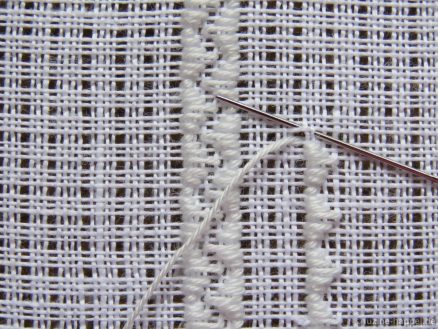
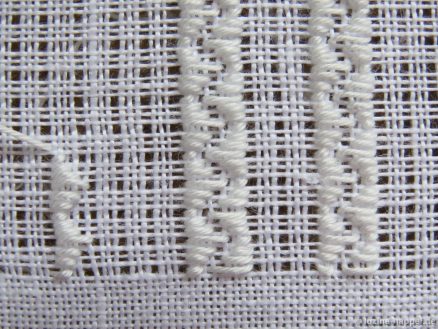
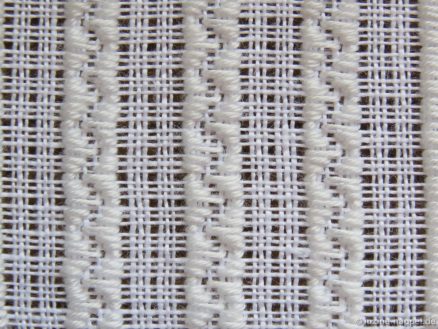
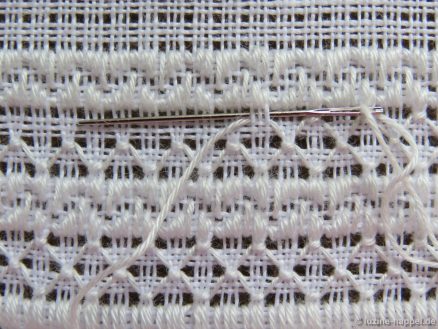
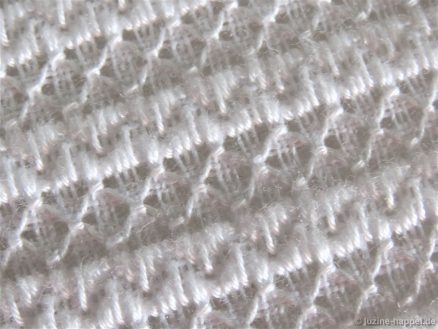
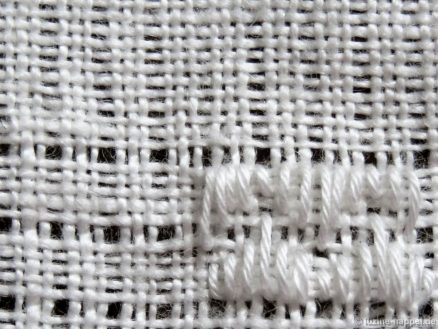
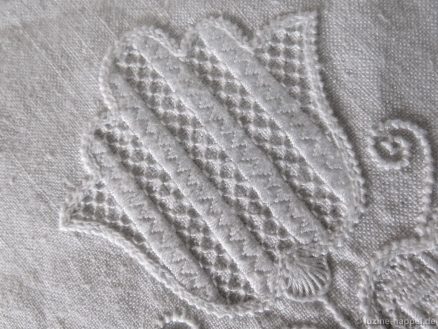
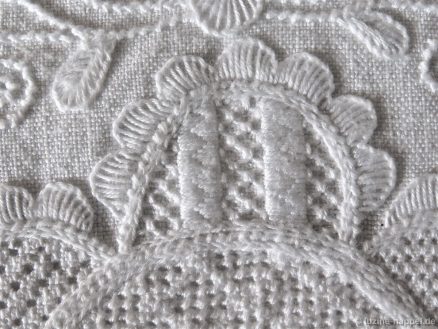
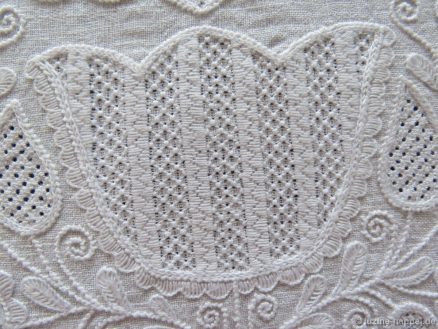
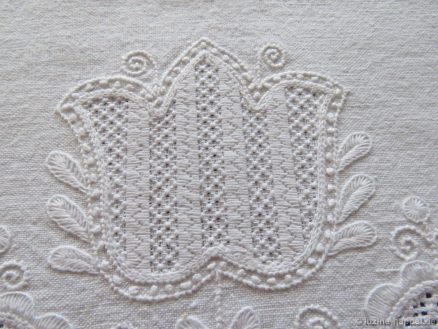
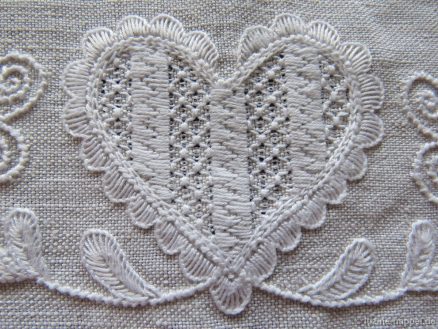


Überraschung!
Vielen Dank,war so gespannt auf das neue Muster !!!
Immer wieder eine Freude.
Ja, nach der nicht angekündigten Sommerpause will ich nun wieder beginnen, Beiträge zu posten. Viele interessante Projekte sind in Vorbereitung – freuen Sie sich drauf!